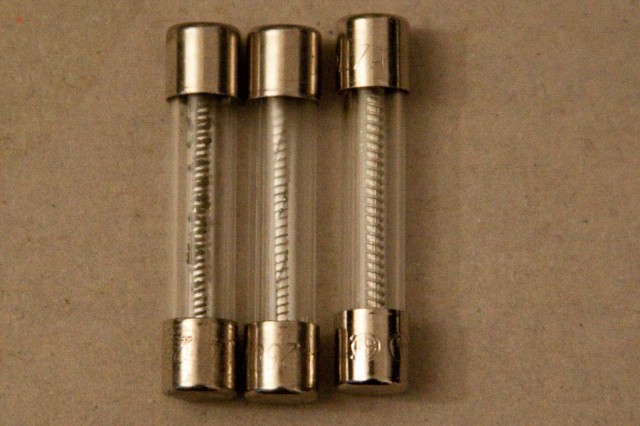Location: Aspen, Colorado.
Symptoms: A variety of things not working.
The Williams Moulin Rouge is an electro-mechanical (EM) pinball machine from the mid-1960’s. The owner has owned this game for over 30 years. However, the game hasn’t been used in over 8 years.
When I first opened the machine, I saw some disconnected wires dangling from the playfield. These were associated with the left flipper. I re-soldered these wires to their respective places.
In the backbox, there were a couple of steppers that were sticky and needed to be cleaned. The ball count stepper and the match stepper. Even if a pinball machine has been set for free-play, the match stepper is important to have working. The match stepper is used continuously throughout a game and is triggered by various switches in the playfield. In this case, it controls various playfield features that alternately illuminate.
The machine wouldn’t power up due to a broken in-line switch that had been placed on the line cord. I replaced the line cord, which had been previously spliced and installed a better quality switch. Originally these games didn’t have power switches. To turn the game off, you kick the bottom of the machine, which trips a “kick-off” switch. To turn the game on, you press the left flipper button. Kicking the bottom of the machine is awkward, so I prefer an in-line cord switch.
Once the machine was powered up, it was in continuous reset mode. This is not unexpected with an EM game that hasn’t been used for a while. A game will get stuck in reset mode when something isn’t detected as being reset. In this case, the score reels were not being reset. They were sticky and not turning freely. Also, there was a dirty contact that was preventing the “100” digit to not get the reset pulses. Once the score reels were fixed up, the game would reset.
The next thing I noticed was that the outhole wouldn’t register a ball after the first ball. Therefore it wouldn’t give an end of ball score, wouldn’t advance the ball count stepper, and therefore wouldn’t eject the ball to the shooter lane. After checking the schematic to see what else was in that circuit and manually tripping the outhole relay, I noticed the scoring motor wasn’t indexing to its home position after either a trigger of the outhole relay or the eject relay. It turned out to be a couple of dirty contacts on the score motor bank that were supposed to keep the score motor running until it was indexed.
Next up, there were many lamps not working. This wasn’t because the bulbs were burned out, but because the sockets and the lamp bases had corrosion on them.
Next up, the right slingshot wasn’t working correctly. As the slingshot arm would kick the ball, it would get hung up on the playfield plastic over it. The plastic was warped. I placed washers under the plastic to raise it up high enough so it wouldn’t interfere with the slingshot.
I replaced all of the rubber pieces on the playfield.
The left flipper needed a new bushing and was missing its torsional return spring. The right bushing was okay, but both will be replaced on a future visit.
All in all, this was pretty typical work for a pinball machine of this vintage and the years of non-use. People always ask me for estimates on this kind of work. It’s very difficult because you have to start fixing things to see what else doesn’t work. But it’s almost always in the 3-6 hour range.



